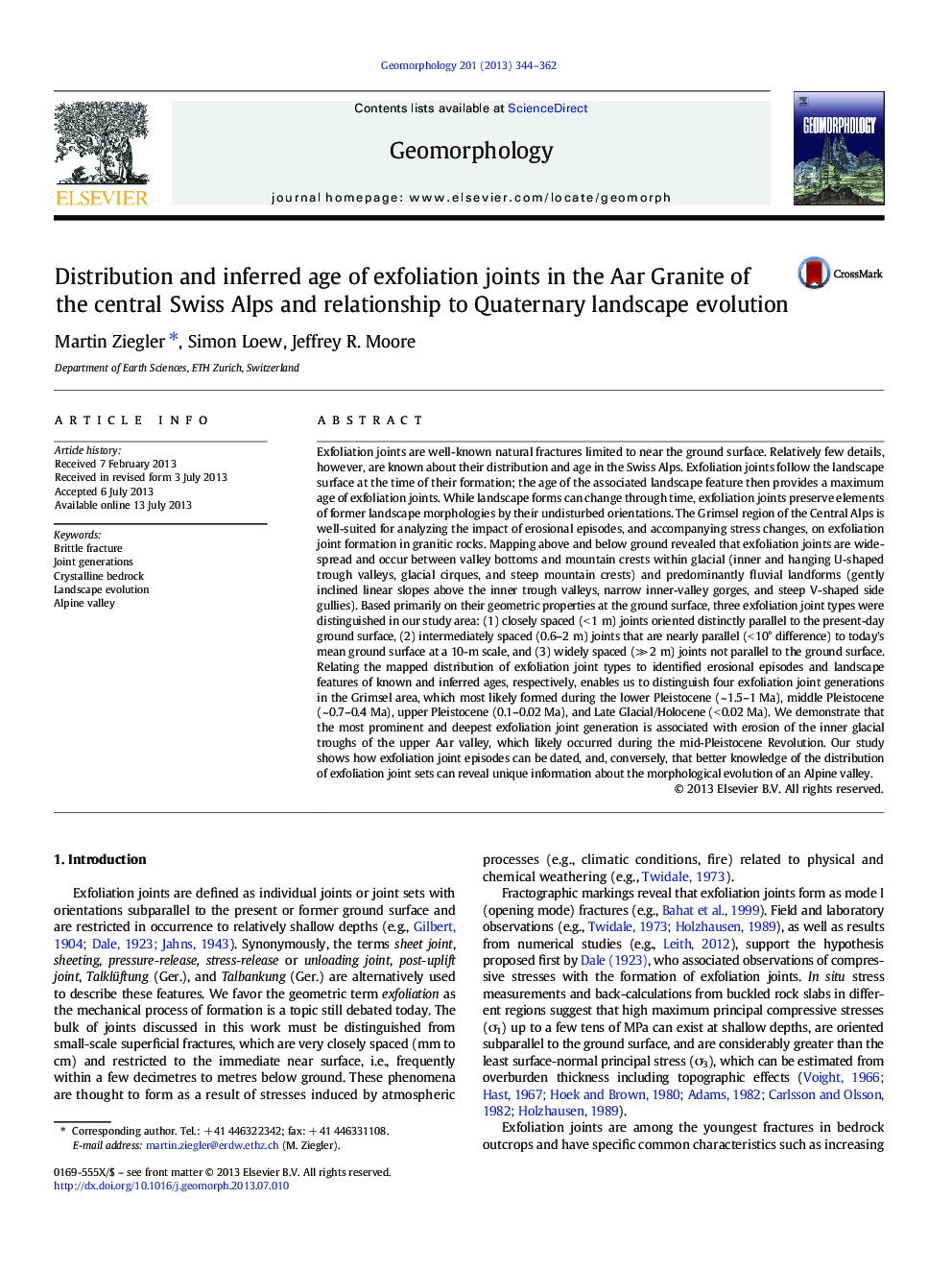| کد مقاله | کد نشریه | سال انتشار | مقاله انگلیسی | نسخه تمام متن |
|---|---|---|---|---|
| 6432677 | 1635448 | 2013 | 19 صفحه PDF | دانلود رایگان |
- We mapped exfoliation joint distributions in the Grimsel region (Swiss Alps).
- We relate exfoliation joint properties to landforms of different origin and age.
- This enables us to distinguish 4 exfoliation joint generations at our study site.
- Most widespread, deep joints are associated with glacial erosion of inner troughs.
Exfoliation joints are well-known natural fractures limited to near the ground surface. Relatively few details, however, are known about their distribution and age in the Swiss Alps. Exfoliation joints follow the landscape surface at the time of their formation; the age of the associated landscape feature then provides a maximum age of exfoliation joints. While landscape forms can change through time, exfoliation joints preserve elements of former landscape morphologies by their undisturbed orientations. The Grimsel region of the Central Alps is well-suited for analyzing the impact of erosional episodes, and accompanying stress changes, on exfoliation joint formation in granitic rocks. Mapping above and below ground revealed that exfoliation joints are widespread and occur between valley bottoms and mountain crests within glacial (inner and hanging U-shaped trough valleys, glacial cirques, and steep mountain crests) and predominantly fluvial landforms (gently inclined linear slopes above the inner trough valleys, narrow inner-valley gorges, and steep V-shaped side gullies). Based primarily on their geometric properties at the ground surface, three exfoliation joint types were distinguished in our study area: (1) closely spaced (< 1 m) joints oriented distinctly parallel to the present-day ground surface, (2) intermediately spaced (0.6-2 m) joints that are nearly parallel (< 10° difference) to today's mean ground surface at a 10-m scale, and (3) widely spaced (â«Â 2 m) joints not parallel to the ground surface. Relating the mapped distribution of exfoliation joint types to identified erosional episodes and landscape features of known and inferred ages, respectively, enables us to distinguish four exfoliation joint generations in the Grimsel area, which most likely formed during the lower Pleistocene (~ 1.5-1 Ma), middle Pleistocene (~ 0.7-0.4 Ma), upper Pleistocene (0.1-0.02 Ma), and Late Glacial/Holocene (< 0.02 Ma). We demonstrate that the most prominent and deepest exfoliation joint generation is associated with erosion of the inner glacial troughs of the upper Aar valley, which likely occurred during the mid-Pleistocene Revolution. Our study shows how exfoliation joint episodes can be dated, and, conversely, that better knowledge of the distribution of exfoliation joint sets can reveal unique information about the morphological evolution of an Alpine valley.
Journal: Geomorphology - Volume 201, 1 November 2013, Pages 344-362
